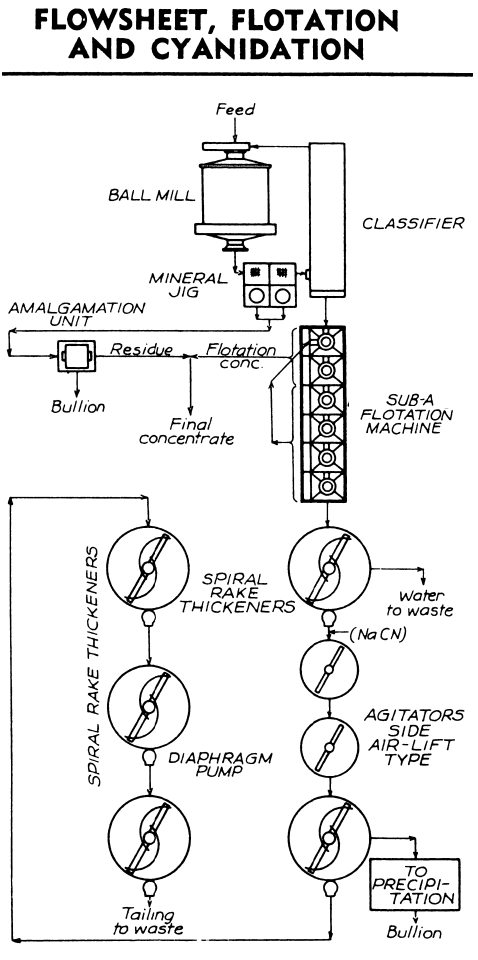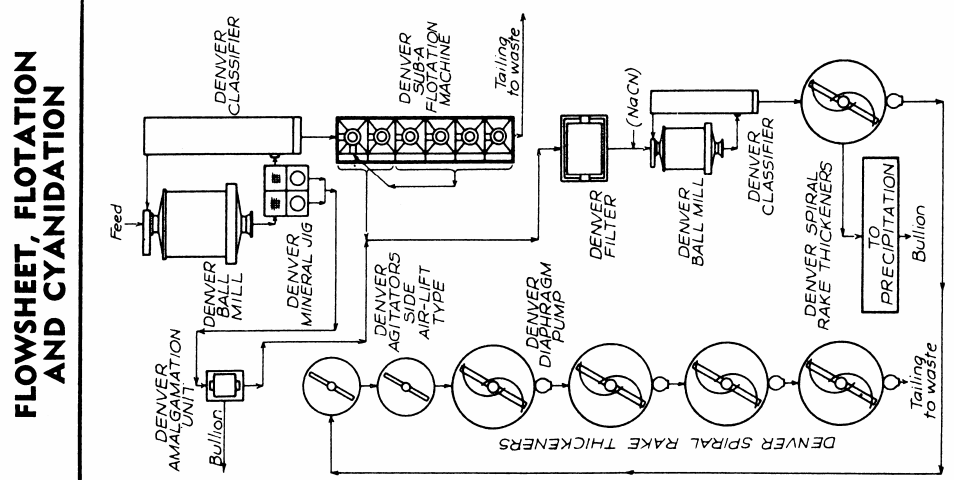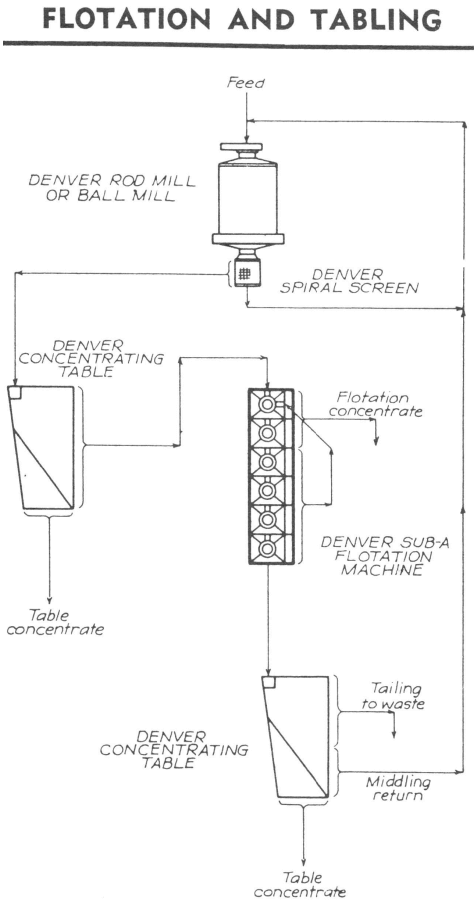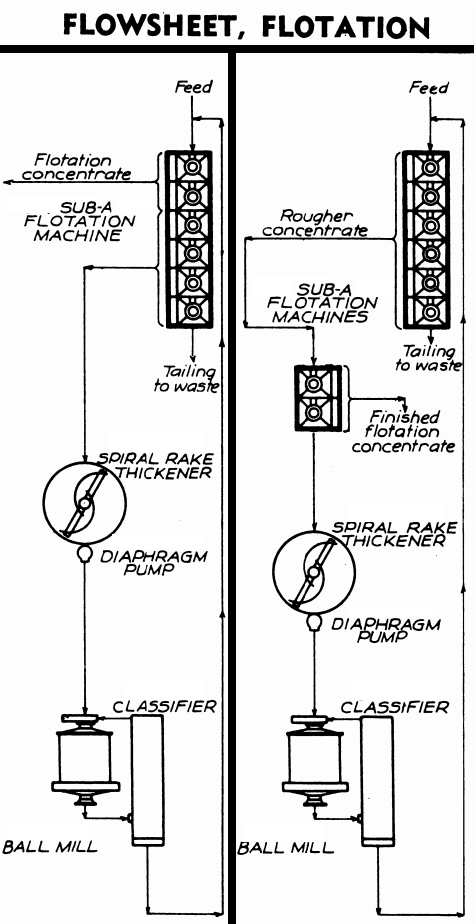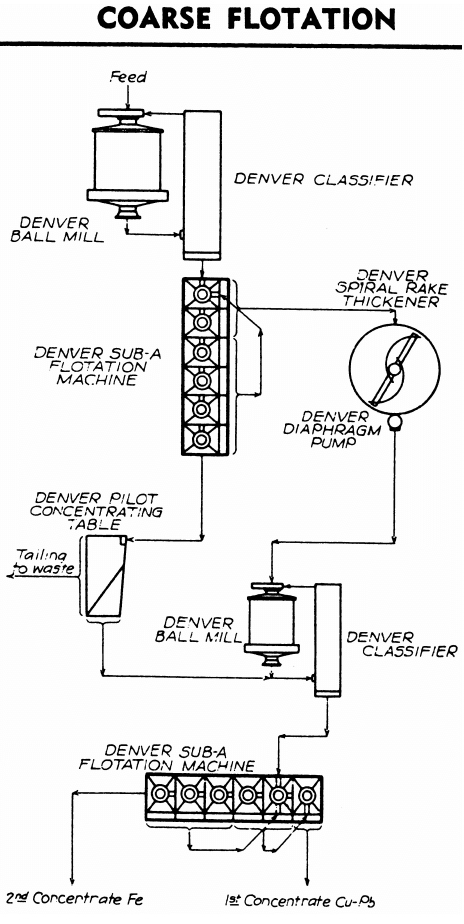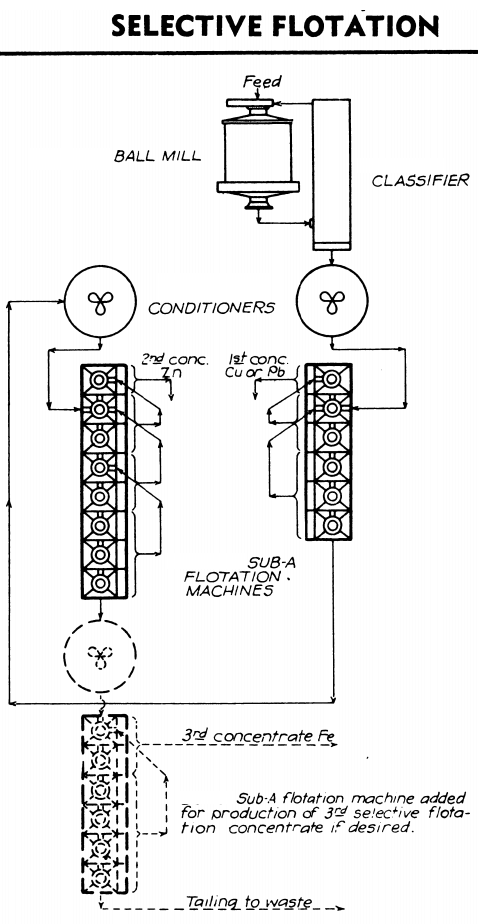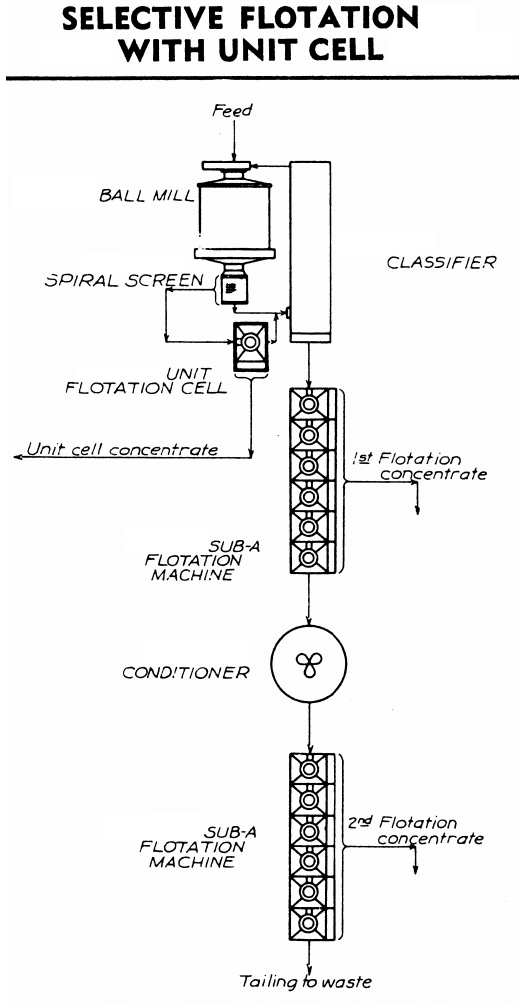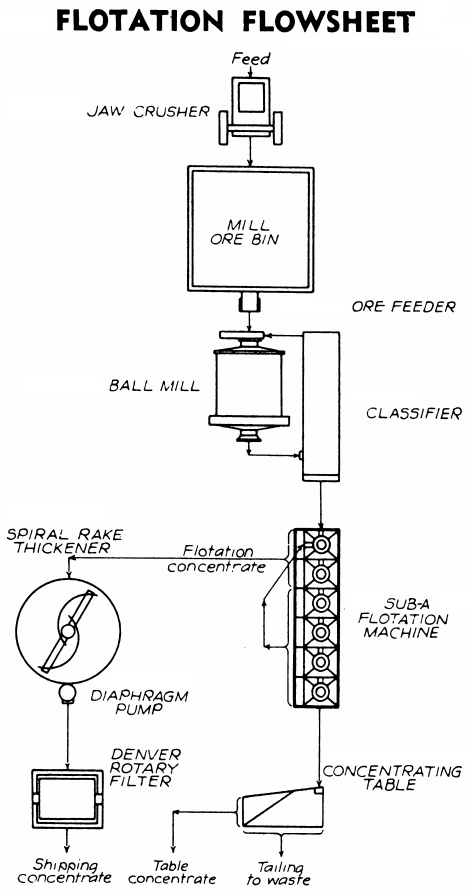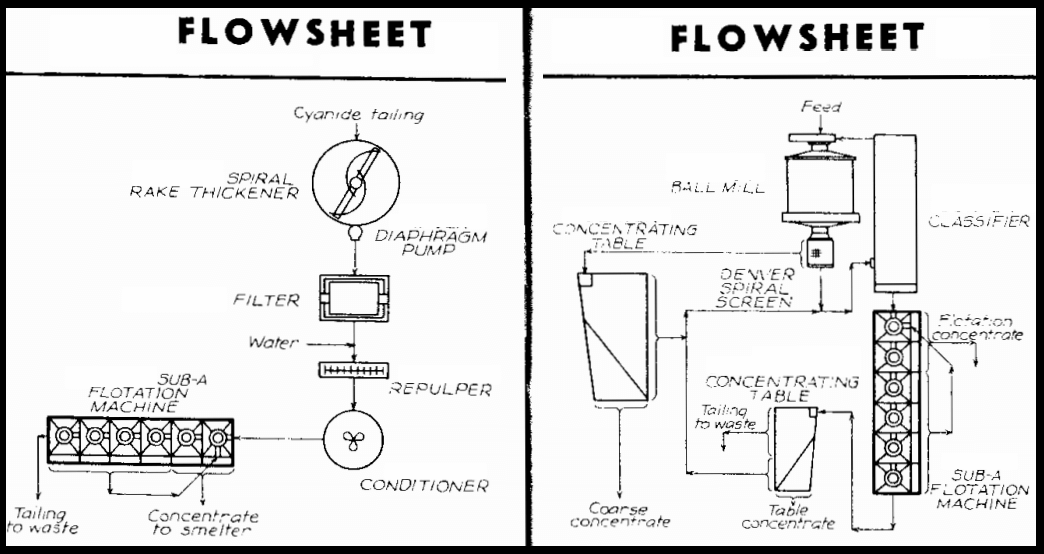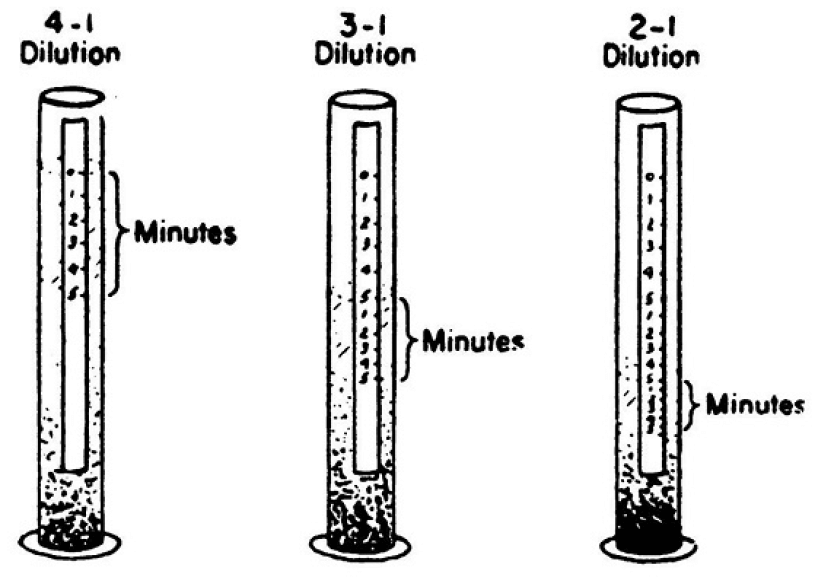Flotation, Gravity and Tailings Cyanidation Leaching Circuit
DESCRIPTION: Flotation with cyanidation of flotation tailings. This flowsheet has a gravity gold recovery embedded into the grinding circuit’s ball mill discharge. ORE TREATED: Ores containing both oxide and sulphide minerals with gold or silver, or those with cyanicides which must he removed before cyanidation. ADVANTAGES: This flowsheet makes possible the milling in one plant … Read more

